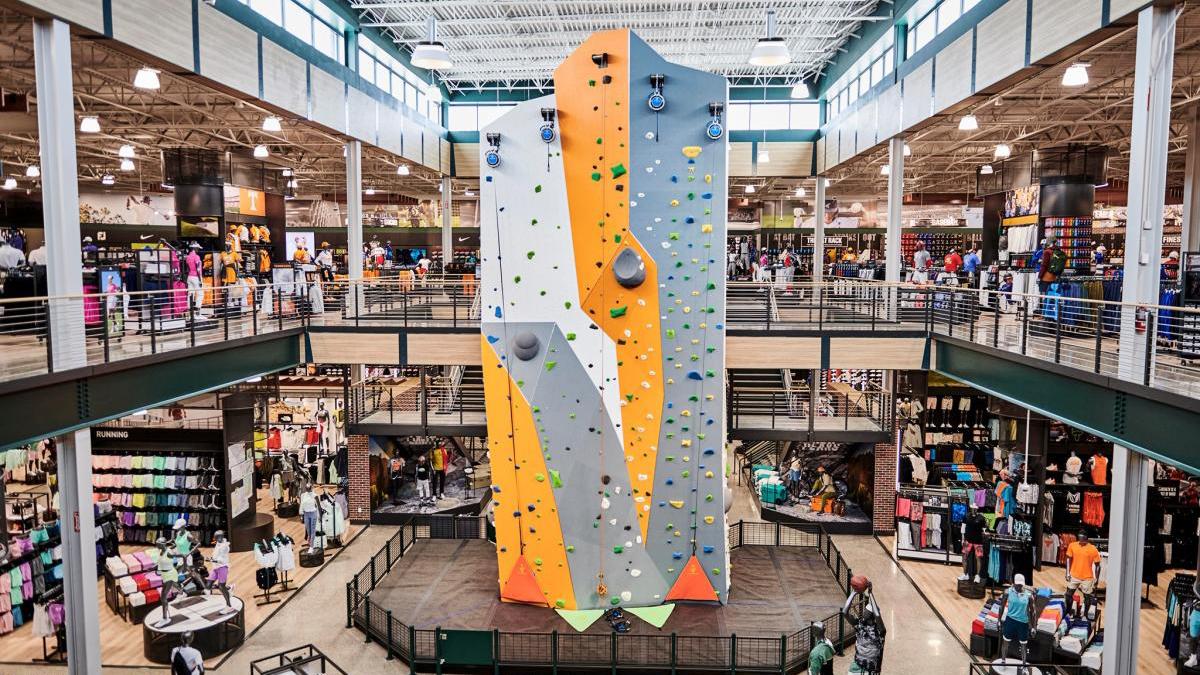Turning retail stores into brand experiences
For exponential retail growth, it’s brand experiences, not stores, that really add up.
When retailers engage with (add)ventures, the first thing we try to do is expand their vision of what it means to be a retailer—today and in the future. This includes reimagining both digital platforms and physical locations while exploring tomorrow’s immersive possibilities. We made big investments in our in-house virtual video production and metaverse e-commerce partnerships to stay ahead. You should too.
In 2024, some retailers implemented bold strategies to invest in their future. Here’s some of my favorites:
Starting in the USA …
Dick’s Sporting Goods strengthened its omnichannel approach, seamlessly connecting physical stores with digital platforms. It also made significant investments in digital platforms, most notably with its GameChanger app targeting the youth sports market. The app reported over 6 million unique users in 2024, reflecting an 11% year-over-year increase, with users averaging nearly 45 minutes per day on the platform. This engagement underscores the company’s dedication to both digital innovation and commitment to engage with younger audiences.
Dick’s continued to grow its House of Sport concept, blending traditional retail with experiential features like sports fields and climbing walls. These stores offer interactive elements that bring customers closer to the brand, creating memorable experiences. This strategy has led to increased sales and a broader market presence, as customers benefit from a cohesive shopping experience across all channels.
Dick’s is committed to experiential innovation. They made hard choices by strategically opening new stores and closing underperforming ones to optimize its retail footprint. Notably, the company announced plans to open new locations by transforming former large-footprint spaces vacated by big retailers like Nordstrom and Sears into their experiential branding-powered House of Sport concept stores.
One House of Sport is in the strategically located Northshore Mall in Peabody, MA. This store will feature unique elements not typically found in standard Dick’s Sporting Goods locations, such as batting cages, rock climbing walls and golf simulators, offering hands-on opportunities to test equipment and enhance their skills. There’s also a spacious outdoor area for product trials, sports activities and community events. During the winter, this space transforms into an ice-skating rink, providing seasonal recreational options and a perfect way to test high-end hockey and figure skates—just as they do with cleats for various sports—helping athletes find the ideal fit.
The Northshore Mall location demonstrates savvy geo-targeting, benefiting from a single major metro market for advertising (Boston), unlike the complexities of NYC/NJ/Philly. New England, with its sports-loving population, is an ideal test market.
Positive results from these initiatives gave Dick’s the confidence to launch a high-budget celebrity ad campaign, aiming to generate momentum for 2025. However, there’s a risk in over-relying on specific brand partnerships, like with Stanley water bottles, which faced backlash over spillage issues during the holiday season.

In Mexico, Argentina and Chile…
Walmart de México y Centroamérica (Walmart Mexico) has set an ambitious goal to double its sales by 2033. This growth strategy is centered on transforming its e-commerce capabilities and expanding into services like healthcare, reflecting a forward-thinking approach that positions Walmart Mexico as a leader in the region. By embracing bold leadership and innovative practices, Walmart Mexico continues to compete successfully in the rapidly growing Mexican e-commerce market.
Across Latin America, retailers are redefining customer experiences and expanding their market reach by embracing cutting-edge innovations. Two standout brands are leading the way:
Mercado Libre (Argentina) has earned its reputation as the “Amazon of Latin America.” This trailblazer has revolutionized e-commerce and online brand engagement across the region. Its ecosystem includes an extensive online marketplace, a robust payment platform called Mercado Pago, and efficient logistics services through Mercado Envíos. Together, these offerings have made Mercado Libre a cornerstone of e-commerce innovation and accessibility throughout Latin America.
Cencosud (Chile), another regional leader, has grown into a retail powerhouse operating in Argentina, Brazil, Chile, Colombia and Peru. The company manages an impressive variety of retail formats, including hypermarkets, supermarkets, home improvement stores and shopping malls. Demonstrating its global aspirations, Cencosud recently acquired a majority stake in The Fresh Market, a U.S.-based specialty grocery chain. This strategic move not only diversifies its portfolio but also highlights its ability to succeed across different geographic and market contexts.
Both Mercado Libre and Cencosud exemplify the bold innovation driving retail transformation in Latin America. By leveraging technology, expanding services and thinking beyond traditional boundaries, these companies are setting a high standard for what retail success looks like in the region and beyond.
The takeaway
Retailers, learn from bold leaders and think beyond the box store. The world is full of opportunities to innovate, engage customers and grow. Don’t limit your brand—or your career.

